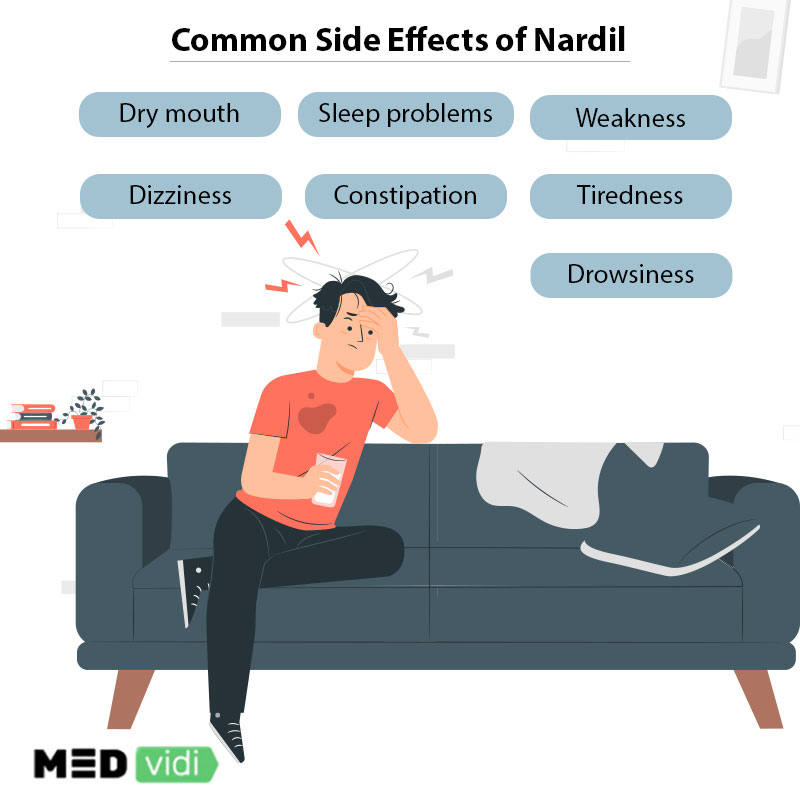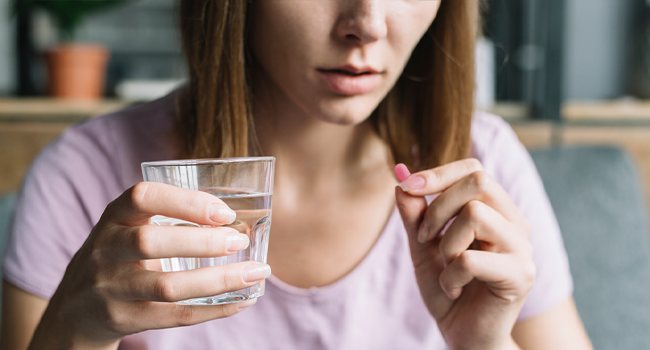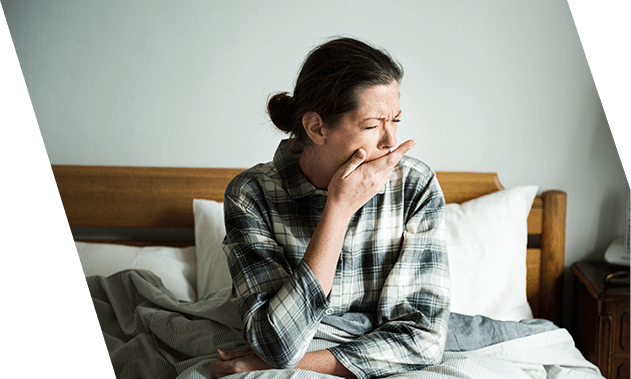Depression is the most common mental illness globally. The
Suicide is the primary cause of death for almost
Pharmaceutical scientists have developed antidepressants like Nardil medication for depression patients. The Nardil drug normalizes the brain’s mood and thought processes. In this post, let’s learn more about its advantages and drawbacks.
Don’t let depression affect your daily life: relationships, job, leisure, and more. Start treatment today.
What is Nardil, and What is It Used for?
The
The medical drug
Side Effects of Nardil
Like any other drug, Nardil has side effects. A doctor will usually prescribe Phenelzine after concluding that its benefits outweigh its risks. The common
- Dizziness
- Stomach upset
- Constipation
- Insomnia/sleeping disorder
- Body weakness
- Fatigue
- Urination problems
- Dry mouth
If a patient experiences or displays any of these severe symptoms, they inform their doctor instantly:
- Anxiety
- Nausea
- Vomiting
- Rapid heartbeat
- Unusual behavior or thoughts
- Panic attacks
- Suicidal thoughts
- Agitation and hostility
- Vision problems like sensitivity to light
- Chest pain
- Rapid weight gain
- Fainting and lightheadedness
Keep in touch with your doctor to discuss any concerns or side effects. Contact us today to get depression help online.
Phenelzine Mechanism of Action
When someone has depression, its cause could be an imbalance of chemicals in the brain called monoamines. A chemical known as monoamine oxidase breaks down the monoamine, creating an imbalance.
Phenelzine (Nardil) is a potent monoamine oxidase inhibitor (MAOI). It prevents the monoamine oxidase from breaking down the monoamines, increasing the amount of monoamine activity in the brain and relieving depression. The drug allows the neurotransmitters like dopamine and serotonin to have long-lasting effects on the receptors.
It usually takes two to four weeks for Phenelzine to start showing clinical results. The doctor monitors the patient’s progress and will increase the dosage if they show no improvement between 6 to 8 weeks.

Dosage of Phenelzine (Nardil)
When using Nardil, the recommended starting dosage ranges from 15 mg tablets every alternate day to 30 mg tablets three times a day as prescribed by a doctor. But the dosage schedule changes with time and at different phases of treatment for it to work.
The doctor can increase the dosage to 60 mg daily quite rapidly, depending on the patient’s tolerance to the medication. Most patients will not display any improvement until they maintain consistent treatment of the 60 mg dosage for at least four weeks.
The doctor may gradually increase the dosing to 90 mg daily (maximum daily dose) to attain sufficient MAO inhibition. Still, they have to be careful to ensure the patient does not overdose.
Once a patient achieves Nardil’s maximum benefit, the doctor or pharmacist reduces the dosage gradually over several weeks. This is known as the maintenance dose phase, featuring a dosage as low as 15 mg daily, maintained for as long as needed.
MEDvidi doctors develop individualized treatment plans for every patient. Get yours today.
Foods to Avoid When Taking Phenelzine
Foods rich in the amino acid tyramine may lead to a severe reaction if taken together with MAOIs and when you store beverages or food supplements for a long time, tyramine levels increase.
The body uses the MAO enzyme to break down all the tyramine, so when one takes MAOI, the enzyme is blocked, allowing the tyramine to construct at high levels in her body. It leads to an increase in blood pressure leading to other medical conditions like:
- Kidney damage
- Stroke
- Eye disorder
- Heart attack
That is why someone who’s on Nardil treatment should do away with stale, matured foods, or foods containing tyramine or dopamine in their diet, such as:
- Expired fish, meat, or poultry
- Avocados
- Caffeine
- Smoked, aged, pickled, cured fish and meat
- Cheese
- Yeast extracts (Marmite, Oxo, Bovril)
- Unpasteurized milk
- Buttermilk
- Probiotics
- Fermented soya bean products
- Shrimp sauce
- Alcoholic or non-alcoholic beers, lagers, or wines
- Concentrated yeast
- Fish sauce
- Banana peels
- Fermented foods
The patient should keep avoiding these foods for two weeks after they discontinue the medication usage.
When taking the Nardil drug, they should take, switch, or combine fresh foods and avoid foods containing protein.
Contraindications
People with a history of congestive heart failure, renal disease, liver disease, and pheochromocytoma (an adrenal tumor) should not use this drug. Further, patients taking sympathomimetic drugs such as cocaine, amphetamines, and epinephrine should avoid Nardil. Also, it should not be used with dextromethorphan (cough medication) and CNS depressants like alcohol and specific narcotics.
Final Thoughts
Nardil and dopamine have a connection since Nardil affects brain activity, increasing dopamine and serotonin levels. Adults diagnosed with depression are typical candidates for taking Nardil. Still, the patient’s response to the medication should be monitored because some people develop social withdrawal and suicidal thoughts due to the medication’s effects. To know how to avoid unwanted side effects and get the medication that will suit you best, contact MEDvidi doctors.













